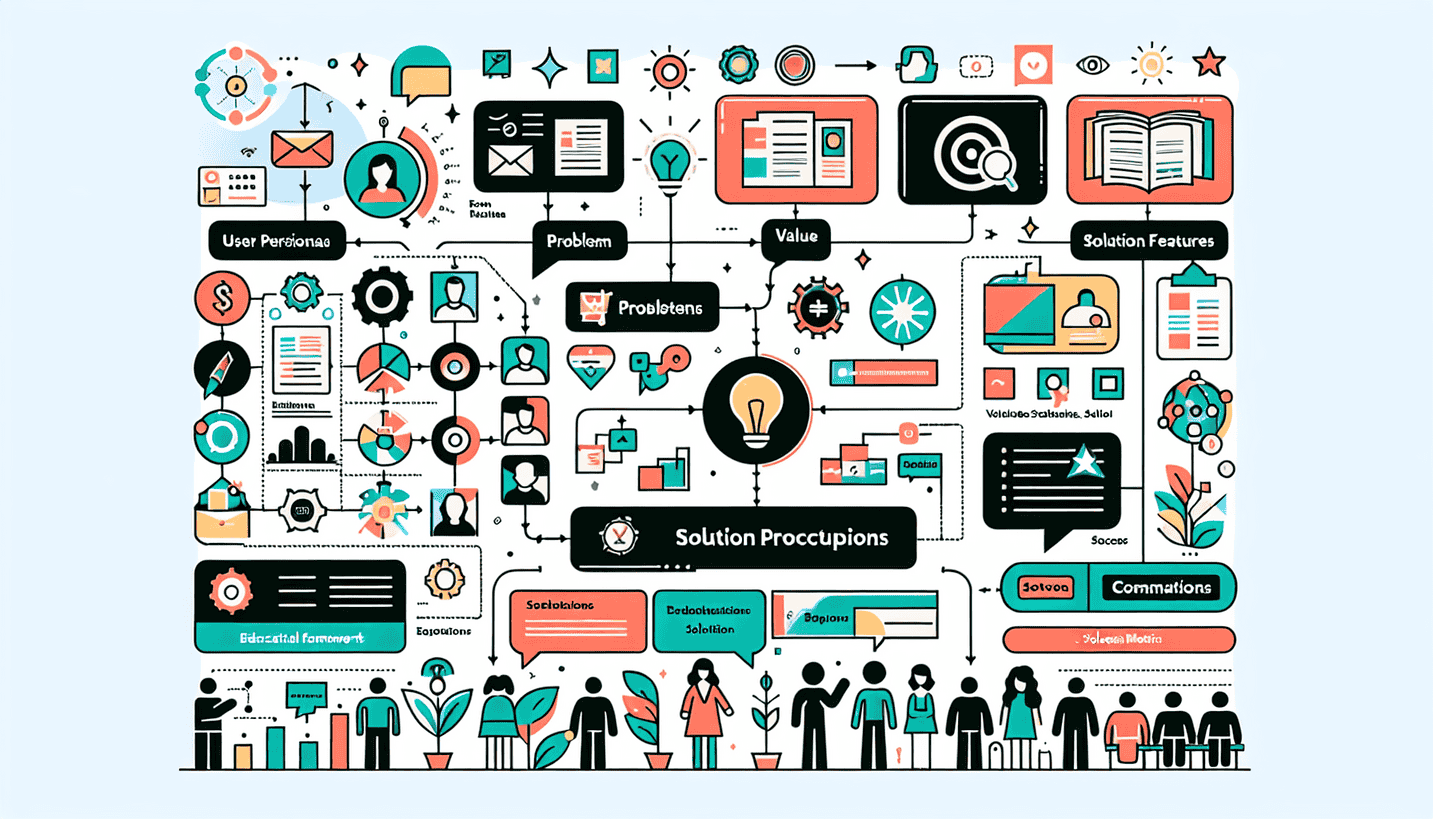Unlocking Product Success: The Secrets Behind Storytelling Mastery!

1. The Power of Storytelling in Product Strategy

In the dynamic world of product management, storytelling isn’t just a nice-to-have; it’s the secret sauce that can elevate your product strategy to unprecedented heights. Just think about it—when was the last time you listened to a presentation that was merely a list of numbers versus one that unfolded like a gripping story? The latter is undoubtedly more engaging and memorable. Storytelling transforms bland data into compelling narratives that resonate, making it easier for stakeholders to grasp complex concepts.
At its core, storytelling in product management serves to weave together the different threads of your product’s life cycle—from conception to market launch and beyond. It makes your strategy more relatable and inspires action. When your audience can connect emotionally with a story, they’re more inclined to remember and share it. For example, look at the success of Airbnb. By sharing stories of unique stays and unforgettable experiences, the company has crafted a powerful narrative that connects hosts and travelers alike, fundamentally changing the landscape of hospitality.
2. Understanding Product Narratives vs. Stories

Now, you might wonder, what’s the difference between a product narrative and individual stories? These terms often get tossed around interchangeably, but they have distinct roles in your storytelling arsenal. A product narrative serves as an overarching framework—a contextual container—for various individual stories that illustrate your product’s features and benefits.
The essence of effective storytelling lies in the structure around it. A product narrative encapsulates the key values, mission, and vision of your business, while individual stories exemplify specific outcomes, challenges, or successes. By employing both elements, you create a multi-layered affect that enriches audience understanding. This framework helps establish clarity during strategic discussions, as it provides the necessary backdrop against which specific stories unfold.
3. Building a System of Stories: The Product Narrative Canvas

Creating a cohesive narrative requires the right tools, and that’s where the Product Narrative Canvas comes into play. Think of it as your structured blueprint for establishing a robust storytelling framework. Here’s how to use it effectively:
-
Position Your Organization: Clearly articulate your organization’s strengths and core values. This sets the stage for credibility and trustworthiness.
-
Portray Your Vision: Paint a vivid picture of the future your product aims to create. What transformation will users experience? This visionary aspect is crucial for engagement.
-
Convey Unique Insights: Share insights that give your organization a competitive edge. What hidden knowledge do you have that others don’t? This “earned secret” showcases your authority in the space.
-
Articulate the Market-Level Challenge: Describe the significant problems or unmet needs in your target market. This establishes urgency and relevance, reinforcing why your product matters.
-
Declare Your Mission & Position Your Product: Outline your short-term objectives and how your product fits into the larger mission. A precise positioning statement clarifies your product’s identity and differentiates it from competitors.
These components—when integrated into your storytelling strategy—equip you with an adaptable framework that grows alongside your business.
4. Answering the Big Questions: “Why Us?” and “Why Now?”

In a crowded marketplace, standing out is paramount, which is why the questions “Why Us?” and “Why Now?” should resonate deeply within your product strategy. A clear articulation of your unique value proposition sets you apart from the competition—think nuanced differences that matter to your audience.
For instance, consider a small tech startup competing against giant corporations. They may highlight unique aspects of their product, like personalized customer support or niche features that provide higher value at a lower cost. By answering “Why Us?” they attract attention and spark intrigue. Similarly, by addressing “Why Now?”, they establish urgency—highlighting why their solution is timely and how it addresses immediate market needs. This dual focus can pave the way for breaking into challenging environments and capturing the attention of potential users or investors.
5. The Art of Outcome-Driven Storytelling

Let’s dive into the core of storytelling: the outcomes. An outcome-oriented approach emphasizes the tangible benefits that your product can bring to its users. This method isn’t solely about showcasing features; it’s about conveying the impact those features create in users’ lives.
To effectively frame your strategy, consider the archetypal elements of storytelling: characters, plots, and resolutions.
- Characters represent your target personas—the people for whom you are solving problems.
- Plots evolve from the unaddressed challenges these personas face.
- Resolutions embody the positive changes your product enables.
A prime example can be seen in a health app targeting fitness enthusiasts. A character might be a busy parent seeking an efficient way to stay fit. The plot involves their struggle to find time in a packed schedule, while the resolution could highlight how your app streamlines workouts to fit their lifestyle.
Further tying everything together is the Golden Thread. This theme weaves through all stories, creating a cohesive narrative that aligns your product strategy with your organization’s mission. It transforms random stories into a connected tapestry of purpose.
6. Establishing Context for Product Strategy Discussions

Articulating your strategy isn’t just about the stories you tell; it’s also about who you’re telling them to. Tailoring your approach based on your audience significantly influences the impact of your message. A seasoned engineer may grasp technical specifics quickly, while a new client might require a more thorough demonstration of value.
To enhance comprehension during strategic discussions, quickly establishing context is vital. Start with a brief overview of the broader narrative, then lead into specific stories or data points that resonate with your audience’s understanding and needs. This practice can transform a mediocre presentation into a memorable experience filled with “aha” moments.
Many product managers have experienced the difference this makes. For example, during a quarterly meeting, a well-prepared manager framed the company’s new software launch not just with numbers but by illustrating the day-to-day transformations users would experience. The room erupted with interest—a testament to the power of context.
7. Crafting Synergies Between Outcomes and Resources

Communicating effectively about your product’s resources in relation to its intended outcomes is another crucial aspect of storytelling. When discussing a new initiative, don’t just outline what you have; draw connections between your resources and the strategic outcomes you’re pursuing.
For conveying these synergies, consider the following best practices:
- Visualize Resource Allocation: Simple charts or diagrams showcasing how resources align with outcomes can clarify complex ideas.
- Highlight Cross-Functional Collaboration: Discuss how different teams contribute to a cohesive strategy.
- Explain ROI: Clearly articulate how your resources will deliver measurable benefits, reinforcing the value of strategic alignment.
Implementing these strategies can create a well-rounded narrative that enhances stakeholder buy-in and elevates product discussions.
8. Engaging Your Audience: Practical Takeaways
As we wrap up our deep dive into storytelling mastery in product strategy, it’s time to reflect on key strategies that can enhance your storytelling approach:
- Relatability: Share stories that connect emotionally with your audience.
- Clarity: Use frameworks like the Product Narrative Canvas to structure your thoughts.
- Context: Tailor your communication for different audiences.
- Synergy: Illustrate how your resources align with product outcomes.
Here’s a nifty checklist for product managers to guide you in your presentation prep:
- Clearly articulate your product’s narrative.
- Identify your target personas and their unmet needs.
- Make connections between outcomes and resource allocation.
- Establish context before diving into details.
- Ensure all stories contribute to a cohesive narrative.
Armed with these insights, your toolset for crafting compelling product strategies is now more robust than ever. It’s time to start weaving your product narratives and inspiring your teams and stakeholders alike!